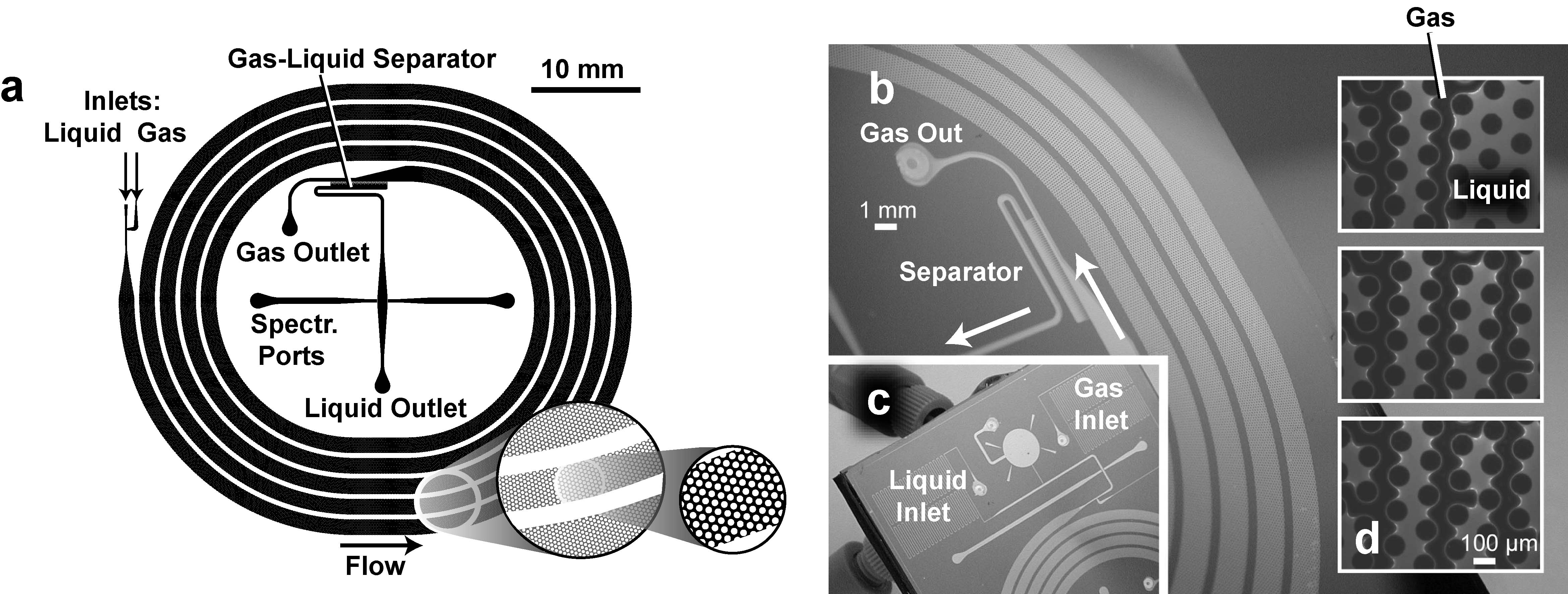353f Transport and Dispersion in Segmented Gas-Liquid Flow through a Forest of Micropillars
We discuss the interaction of multiphase flow with a 1000um wide, 150um deep and 700mm long microchannel network that is soft-lithographically patterned and populated with a regular forest of microfabricated pillars (diameter: 50um-100um, see Figures a,b). Our studies connect to fundamental work on flow in porous media and has applications in chromatography and catalysis. Gas-liquid flow patterns between pillars and their dynamics are determined in pulse-laser fluorescent micrographs and with microscale particle image velocimetry measurements. The presence of persistent static fractions, mixing and axial dispersion are compared with multiphase flow through macroscopic structured/unstructured beds and porous media.
A piezo-electric sample-injector [1,2] is integrated into the chip (c) and allows to inject 100nl tracer volumes and integrated spectroscopy is used to determine axial dispersion from the broadening tracer pulse. Pulse-laser fluorescence microscopy reveals multiphase flow patterns (d). Dispersion is significantly reduced influenced in comparison to single-phase flows and the separation of nanoparticles based on size exclusion in thin liquid films is demonstrated.
References:
[1] Guenther, A., Khan, S.A., Trachsel, F., Thalmann, M., Jensen, K.F. Lab on a Chip, 4 (4), 2004.
[2] Trachsel, F., Guenther, A., Khan, S.A., Jensen, K.F. Chem. Eng. Sci., 60 (21), 2005.

Web Page: jensengroup.mit.edu